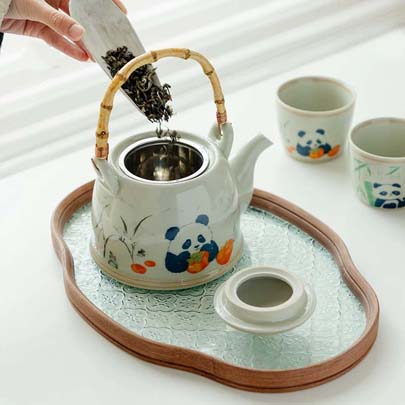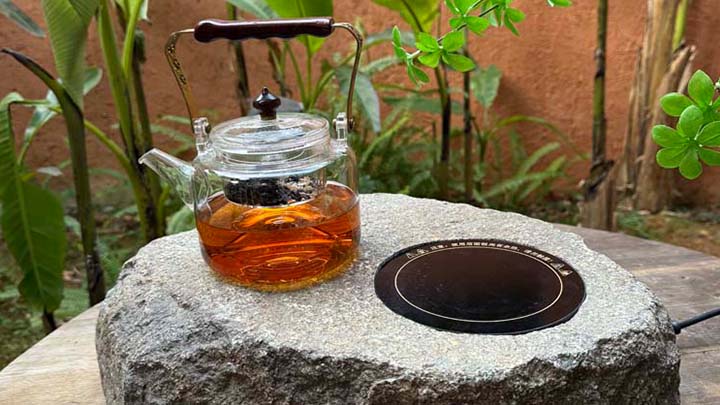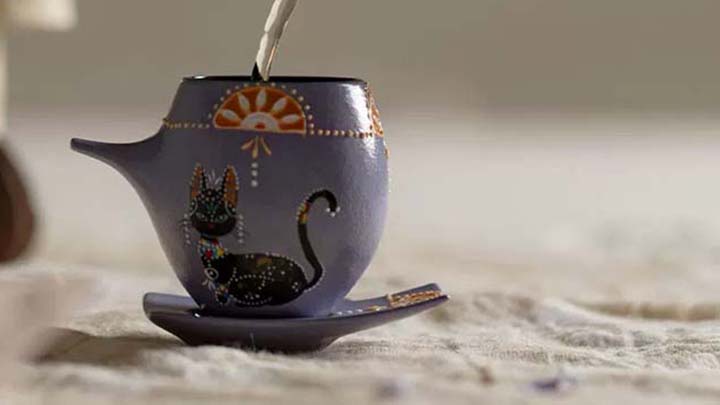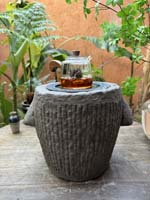Stone Tea Stoves: A Unique Tradition or a Global Phenomenon?
The stone tea stove, an essential tool in traditional tea culture, is often associated with China’s deep-rooted tea traditions. However, the use of stone and clay stoves for boiling water and brewing tea is not exclusive to China. Various cultures around the world have developed their own versions of tea stoves, each reflecting unique cultural and historical influences. This article explores the characteristics of stone tea stoves and their presence beyond China.
1. What is a Stone Tea Stove?
A stone tea stove is a specially crafted heating device made of natural stone, clay, or a combination of both. It is designed to heat water for tea brewing using charcoal or wood fire. Stone tea stoves provide a slow, steady heat source, which many tea enthusiasts believe enhances the flavor and aroma of tea.
2. The Role of Stone Tea Stoves in Chinese Tea Culture
Ancient Tradition: Stone tea stoves have been used in China for centuries, particularly in traditional tea ceremonies and scholar gatherings.
Aesthetic and Practicality: They are valued not just for their functionality but also for their artistic appeal, often engraved with calligraphy or traditional motifs.
Enhanced Flavor: Tea brewed over a charcoal-heated stone stove is believed to have a smoother and more refined taste due to the stable and natural heating process.
3. Similar Tea Stove Traditions Around the World
While China has popularized stone tea stoves, other countries have similar tea-heating methods:
Japan – Tetsubin and Chagama: Japanese tea ceremonies often use cast iron kettles (Tetsubin) heated over a charcoal stove (Chagama), producing a comparable effect to stone tea stoves.
Korea – Onggi Clay Stoves: Traditional Korean tea preparation sometimes incorporates onggi clay stoves, known for their heat retention and natural material benefits.
India – Chai Stoves: In India, tea (chai) is traditionally brewed over clay or metal stoves fueled by wood or charcoal, maintaining a slow infusion process.
Middle Eastern and Turkish Tea Culture: Samovars, used in Turkey, Russia, and Iran, operate similarly, using indirect heat to maintain a constant brewing temperature.
4. Choosing a Stone Tea Stove
If you are interested in incorporating a stone tea stove into your tea ritual, consider the following factors:
Material: Natural stone, clay, or cast iron—each has its own heat retention properties.
Heat Source: Some stoves are designed for charcoal, while others can accommodate gas or electric heating elements.
Size and Design: Choose a stove that suits your tea-drinking habits and aesthetic preferences.
Portability: Some stone stoves are heavy and best suited for home use, while smaller, portable versions are available for outdoor tea sessions.
Conclusion
Although stone tea stoves are a hallmark of Chinese tea culture, similar traditions exist worldwide, demonstrating the universal appreciation for a well-brewed cup of tea. Whether you choose a Chinese stone stove, a Japanese Chagama, or an Indian chai stove, the key is to embrace the art of slow, mindful tea preparation. The use of natural materials and traditional heating methods continues to bring warmth and depth to tea experiences across cultures.




